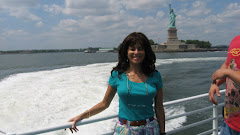Once again, Saudi Arabia makes the headlines for criminalizing
virtually everything a woman does outside the home.
Attached is a direct excerpt from an AP article by Aya
Batrawy that describes the latest arrest, and classification as terrorist, of
women Saudi drivers.
Often, what I enjoy most about such articles is the
comments. Here are a few:
Reader Comments:
Our allies......worse than
many of our enemies.
The United States needs to
put their foot down and not do any business with these countries and to ban all
their flights into the United States until they change their policy about
women. Treating them like second class slaves is disgusting. Just because of
the oil we allow these crimes to be accepted and their treatment of women would
never be allowed in our country.
This Saudi terrorism court
has plenty of wealthy Saudis to prosecute who have been funding terrorism for
decades and haven't touched a single one of them. They funded the terrorist
training camps in Pakistan and Afghanistan and they funded ISIL. Yet here they
are, prosecuting women for vile (non) crime of getting behind the wheel of a
car.
It tells a lot about you by
the friends you keep
"For example, this year
it sentenced a revered Shiite cleric Sheikh Nimr al-Nimr, a vocal critic of the
government, to death for sedition and sentenced a prominent human rights
lawyer, Waleed Abul-Khair, to 15 years in prison on charges of inciting public
opinion."
The US supports one of the most repressive regimes in the world, yet Republicans are upset about normalizing relations with Cuba?
The US supports one of the most repressive regimes in the world, yet Republicans are upset about normalizing relations with Cuba?
The United States needs to
put their foot down and not do any business with these countries and to ban all
their flights into the United States until they change their policy about
women. Treating them like second class slaves is disgusting. Just because of
the oil we allow these crimes to be accepted and their treatment of women would
never be allowed in our country.
Saudi Women Drivers Referred To Terrorism Court
By
AYA BATRAWY Associated Press12/25/2014
DUBAI, United Arab Emirates (AP) — Two Saudi women detained for nearly a
month in defiance of a ban on females driving were referred on Thursday to a
court established to try terrorism cases, several people close to the
defendants said.
The cases of the two, Loujain al-Hathloul and Maysa al-Amoudi, were sent to
the anti-terrorism court in connection to opinions they expressed in tweets and
in social media, four people close to the two women told The Associated Press.
They did not elaborate on the specific charges or what the opinions were.
Both women have spoken out online against the female driving ban. Activists say
they fear the case is intended to send a warning to others pushing for greater
rights. The four people spoke on condition of anonymity because of fear of
government reprisals.
The Specialized Criminal Court, to which their cases were referred, was
established in the capital Riyadh to try terrorism cases but has also tried and
handed long prison sentences to a number of human rights workers, peaceful
dissidents, activists and critics of the government. For example, this year it
sentenced a revered Shiite cleric Sheikh Nimr al-Nimr, a vocal critic of the
government, to death for sedition and sentenced a prominent human rights
lawyer, Waleed Abul-Khair, to 15 years in prison on charges of inciting public
opinion.
Human Rights Watch recently warned that "Saudi authorities are ramping
up their crackdown on people who peacefully criticize the government on the
Internet." It said that judges and prosecutors are using "vague
provisions of a 2007 anti-cybercrime law to charge and try Saudi citizens for
peaceful tweets and social media comments."
This was the first time women drivers have been referred to the court,
activists said.
The detention of al-Hathloul, 25, and Maysa al-Amoudi, 33 — both arrested
on Dec. 1 — has been the longest yet for any women who defied the driving ban.
They were vocal supporters of a grassroots campaign launched last year to
oppose the ban, and have a significant online following with a total 355,000
followers on Twitter for the two of them at the time of their arrest.
Though no formal law bans women from driving in Saudi Arabia,
ultraconservative Saudi clerics have issued religious edicts forbidding women
from taking the wheel, and authorities do not issue them driver's licenses. No
such ban exists anywhere else in the world, even in other conservative Gulf countries.
The four people close to the women said their lawyers appealed the judge's
decision to transfer their cases. An appeals court in Dammam, the capital of
Eastern Province, is expected to decide on the referral in the coming days,
they said.
Authorities have a history of clamping down on Saudi women who attempt to
drive. In 1990, 50 women were arrested for driving. They had their passports
confiscated and lost their jobs. More than 20 years later, a woman was
sentenced in 2011 to 10 lashes for driving, though the king overturned the
sentence.
































































.jpg)
.jpg)



